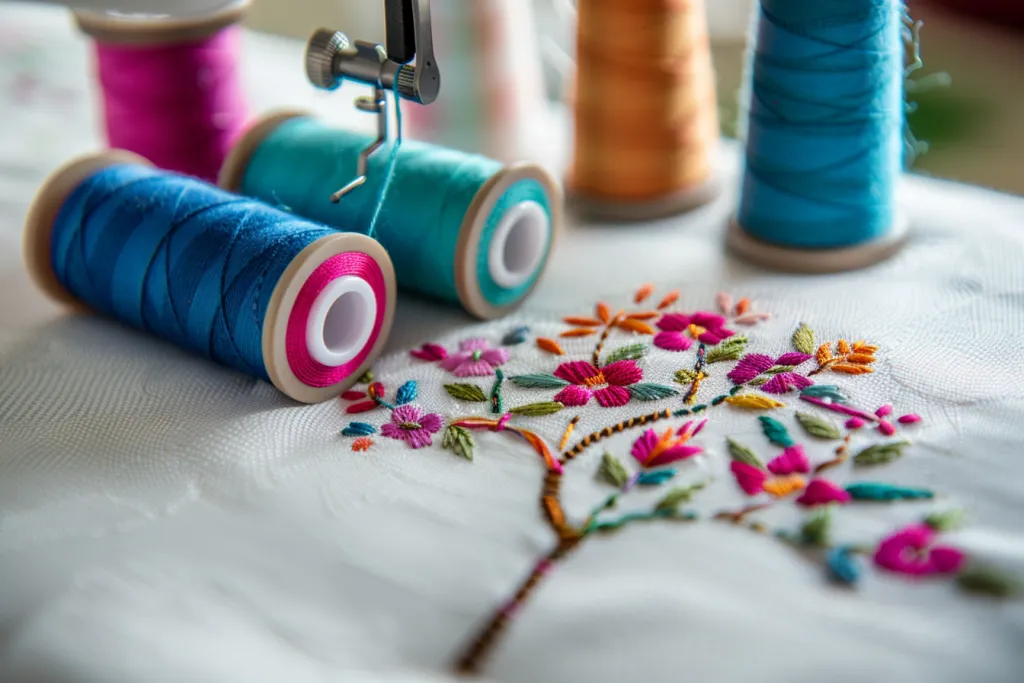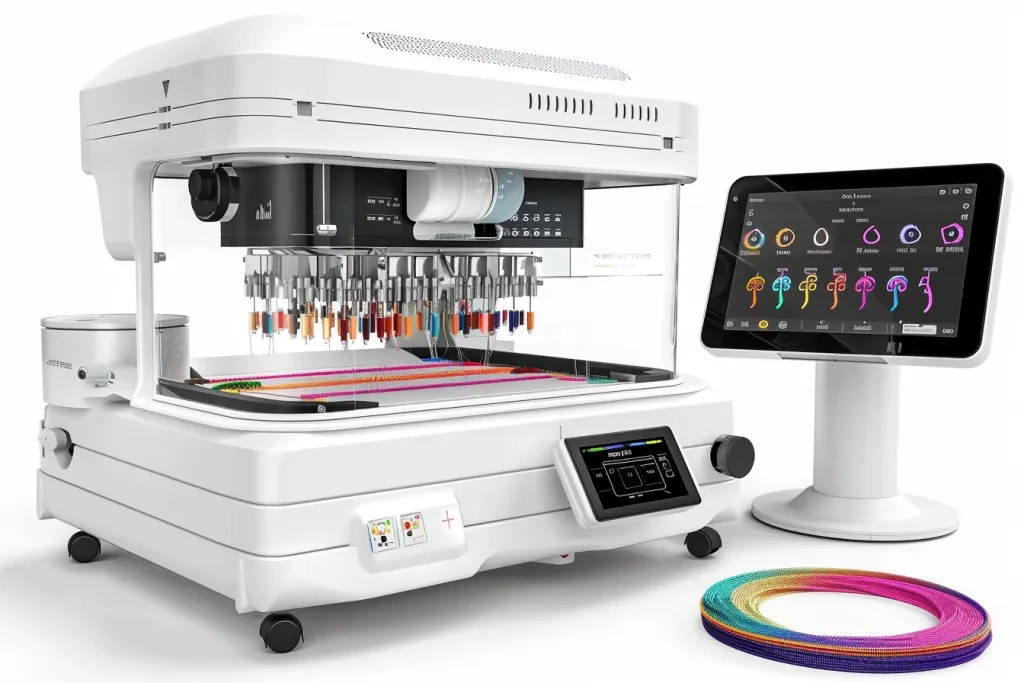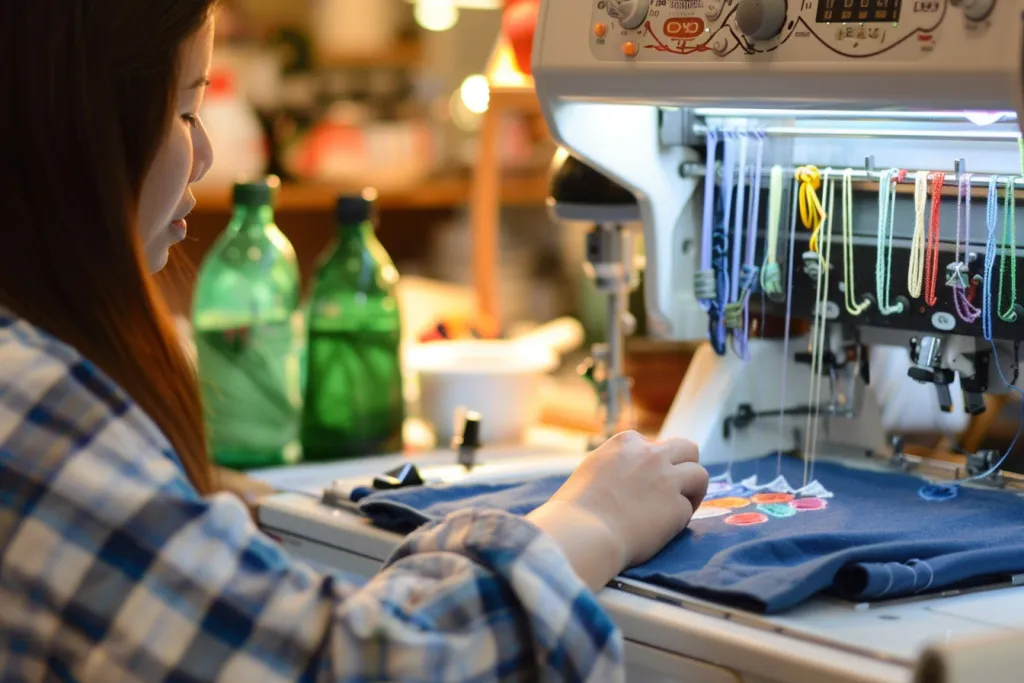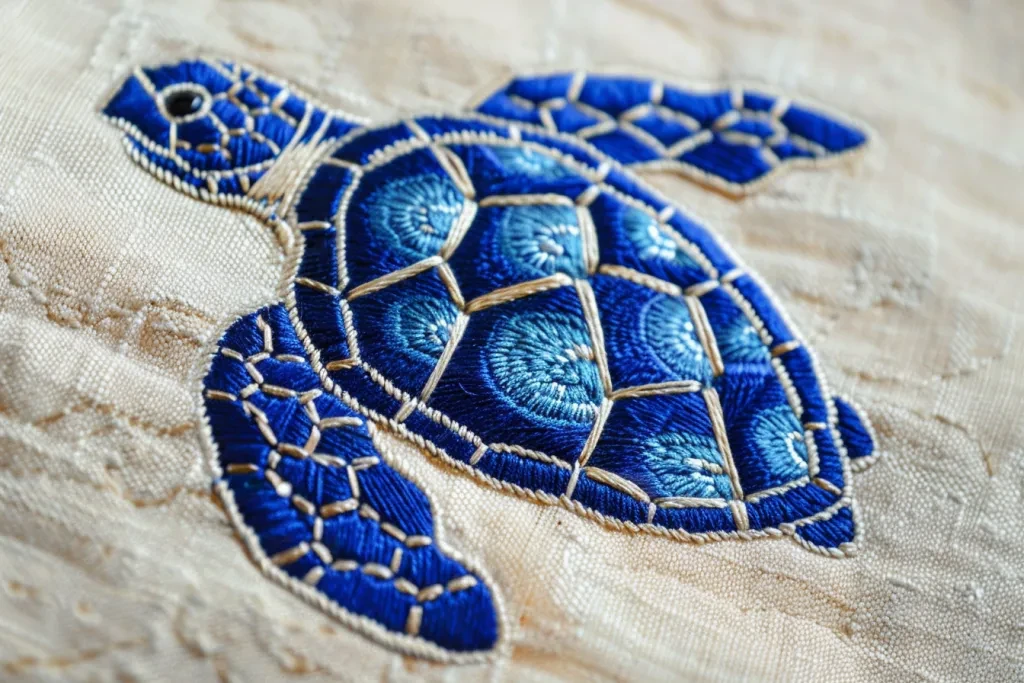Embroidery machines have revolutionized the way we approach fabric design, blending traditional craftsmanship with modern technology. This article aims to explore the intricacies of embroidery machines, focusing on the features that matter most to users. From the novice hobbyist to the seasoned professional, understanding these machines’ capabilities, limitations, and potential for creativity is crucial. Join us as we unravel the fabric of this fascinating topic, stitch by stitch.
Table of Contents:
– Understanding the types of embroidery machines
– Key features to look for in an embroidery machine
– The importance of hoop sizes and their impact
– Software compatibility and design possibilities
– Maintenance and care for longevity
Understanding the types of embroidery machines

Embroidery machines come in various forms, each tailored to specific needs and skill levels. Single-needle embroidery machines are akin to traditional sewing machines but are equipped with embroidery capabilities. They are user-friendly, making them ideal for beginners or those with limited space. On the other hand, multi-needle machines offer the ability to work with multiple colors without manual thread changes, significantly speeding up the embroidery process. These are preferred by professionals or serious hobbyists who produce large volumes of work.
The choice between a machine that only embroiders versus one that can sew and embroider is another consideration. Standalone embroidery machines typically have larger embroidery areas and more advanced features, catering to those who specialize in embroidery. Sewing and embroidery combination machines, however, offer versatility for those who enjoy both crafts but have limited space or budget for multiple machines.
Lastly, commercial-grade machines open up the realm of mass production, with some capable of handling up to sixteen threads simultaneously. These machines are built for durability and speed, designed to meet the demands of a business environment. Understanding your needs and the scale at which you intend to work is the first step in selecting the right type of embroidery machine.
Key features to look for in an embroidery machine

When selecting an embroidery machine, certain features stand out as particularly important for users. The maximum embroidery area is a critical factor, as it determines the size of the designs you can create. Machines with larger embroidery areas offer more flexibility but may come with a higher price tag.
The speed of the machine, measured in stitches per minute (SPM), affects how quickly you can complete projects. Higher speeds mean faster production times, but the quality of the embroidery can vary depending on the machine’s precision at high speeds.
Another vital feature is the machine’s display and interface. A color touchscreen display can significantly enhance the user experience, making it easier to select, edit, and preview designs before stitching. The intuitiveness of the machine’s software also plays a crucial role in how efficiently users can navigate through different functions and customization options.
The importance of hoop sizes and their impact

Hoop size is paramount in embroidery, as it dictates the maximum design size your machine can handle. Embroidery machines typically come with one or more hoops, allowing for versatility in project sizes. Smaller hoops are perfect for monograms and small designs, while larger hoops can accommodate full jacket backs or quilt blocks.
The ability to use different hoop sizes also affects the machine’s flexibility and the variety of projects you can undertake. Some machines offer the option to purchase additional hoops for even greater versatility.
Moreover, the ease of attaching and detaching hoops can significantly impact your workflow. Machines that feature quick-change hoops can save time and frustration, especially when working on projects that require multiple hoop sizes.
Software compatibility and design possibilities

The software component of embroidery machines unlocks a world of design possibilities. Compatibility with design software allows users to create, edit, and customize embroidery designs beyond the machine’s built-in library. This feature is particularly appealing to those who wish to personalize their work or create unique designs.
Some machines come with proprietary software, while others are compatible with third-party options, offering a wider range of creative tools and functionalities. The ability to import designs from various sources, including the internet, significantly expands the user’s creative palette.
Understanding the software’s learning curve is also important. While some programs are user-friendly and designed for beginners, others may require more time to master. Users should consider their own comfort level with technology when selecting a machine based on software capabilities.
Maintenance and care for longevity

Proper maintenance and care are essential for ensuring the longevity and optimal performance of your embroidery machine. Regular cleaning, according to the manufacturer’s instructions, helps prevent thread jams and other common issues. Lubrication of moving parts, when required, keeps the machine running smoothly.
It’s also important to use the correct needles and threads recommended for your machine to avoid damage and ensure the highest quality embroidery. Regular check-ups or servicing by a professional can help maintain the machine’s performance over time and prevent costly repairs.
Conclusion:
Embroidery machines offer a unique blend of creativity and technology, enabling users to bring intricate designs to life on fabric. By understanding the types of machines available, key features, hoop sizes, software compatibility, and the importance of maintenance, users can make informed decisions that best suit their needs and aspirations. Whether you’re a hobbyist looking to explore the world of embroidery or a professional aiming to enhance your craft, the right embroidery machine can open up endless possibilities for creative expression.



